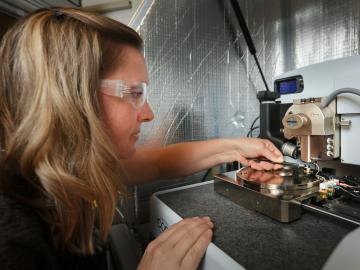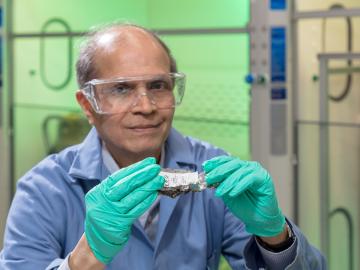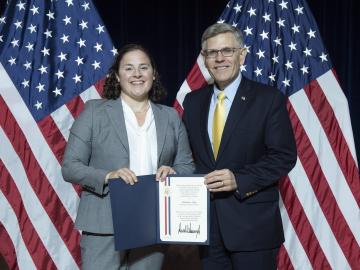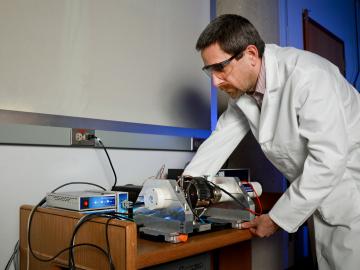
Filter News
Area of Research
- (-) Materials (131)
- Advanced Manufacturing (7)
- Biological Systems (2)
- Biology and Environment (60)
- Building Technologies (2)
- Clean Energy (123)
- Climate and Environmental Systems (2)
- Computational Engineering (2)
- Computer Science (10)
- Electricity and Smart Grid (1)
- Energy Sciences (1)
- Fuel Cycle Science and Technology (1)
- Fusion and Fission (19)
- Fusion Energy (9)
- Isotope Development and Production (1)
- Isotopes (15)
- Materials Characterization (2)
- Materials Under Extremes (1)
- National Security (31)
- Neutron Science (55)
- Nuclear Science and Technology (13)
- Quantum information Science (3)
- Supercomputing (104)
- Transportation Systems (1)
News Topics
- 3-D Printing/Advanced Manufacturing (9)
- Advanced Reactors (2)
- Artificial Intelligence (1)
- Bioenergy (3)
- Biomedical (1)
- Buildings (3)
- Chemical Sciences (16)
- Clean Water (2)
- Climate Change (3)
- Composites (3)
- Computer Science (4)
- Coronavirus (1)
- Critical Materials (4)
- Cybersecurity (1)
- Decarbonization (4)
- Energy Storage (9)
- Environment (8)
- Fusion (4)
- Grid (2)
- Irradiation (1)
- Isotopes (4)
- Materials (40)
- Materials Science (25)
- Microscopy (8)
- Molten Salt (2)
- Nanotechnology (9)
- Net Zero (1)
- Neutron Science (12)
- Nuclear Energy (10)
- Partnerships (6)
- Physics (11)
- Polymers (6)
- Quantum Computing (2)
- Quantum Science (3)
- Renewable Energy (1)
- Sustainable Energy (6)
- Transportation (7)
Media Contacts

Six new nuclear reactor technologies are set to deploy for commercial use between 2030 and 2040. Called Generation IV nuclear reactors, they will operate with improved performance at dramatically higher temperatures than today’s reactors.

When Nina Balke came to the United States on a Feodor Lynen Fellowship for German scholars, her original plan was to complete a year abroad and return home to native opportunities in materials sciences.

Rare earth elements are the “secret sauce” of numerous advanced materials for energy, transportation, defense and communications applications.

Using additive manufacturing, scientists experimenting with tungsten at Oak Ridge National Laboratory hope to unlock new potential of the high-performance heat-transferring material used to protect components from the plasma inside a fusion reactor. Fusion requires hydrogen isotopes to reach millions of degrees.

A new method developed at Oak Ridge National Laboratory improves the energy efficiency of a desalination process known as solar-thermal evaporation.

Athena Safa Sefat, a researcher at the Department of Energy’s Oak Ridge National Laboratory, has been awarded the Fellowship of the Institute of Physics (IOP).

Collaborators at the Department of Energy’s Oak Ridge National Laboratory and U.S. universities used neutron scattering and other advanced characterization techniques to study how a prominent catalyst enables the “water-gas shift” reaction to purify and generate hydrogen at industrial scale.

Two researchers from the Department of Energy’s Oak Ridge National Laboratory have received a 2019 Presidential Early Career Award for Scientists and Engineers, or PECASE.

Raphaël Hermann of the Department of Energy’s Oak Ridge National Laboratory conducts experiments to better understand materials for energy and information applications.

Two early career researchers at the Department of Energy's Oak Ridge National Laboratory have been included on the “Periodic Table of Younger Chemists” following an international competition conducted by the International Union of Pure and Applied Chemistry (IUPAC) and the International Younger Chemists Network (IYCN).


